 |
||||||||||||
|
VVA Committee?Reports, November/December 2016 Agent Orange/Dioxin BY MAYNARD KADERLIK, CHAIR
As we do town hall meetings all across the country, veterans continue to speak about what’s happened to their children and grandchildren. They report that there is nothing in their family histories related to the medical problems their offspring are facing. We hope and pray that we get legislation passed in this Congress. If not, we will resubmit it to the 115th Congress. We must educate new legislators on the issue of Agent Orange, as we have done in the past. To get legislation passed now, we need to call and continue to call those who have not signed on. Legislators know we won’t give up. Many VVA members have worked long and hard on this issue. I thank them and hope they continue to do so. Economic Opportunities BY FRANK BARRY, CHAIR
Promote Meaningful Jobs and Training: VVA sponsors and participates in job fairs throughout the country and supports legislation that will enhance employment opportunities for all veterans. Significant pieces of legislation this year included the Veterans First Act (S.2921) and the National Defense Authorization Act (S.2943), the Fairness for Veterans Act (H.R.4683), and the Uniformed Services Employment and Reemployment Rights Improvement Act. Committee members have attended roundtables on Veterans’ Educational Success, which outlined the results of the National Veteran Education Success Tracker and worked with DoD on the Interagency Transitions Assistance Program for the thousands of veterans moving into the civilian workforce. Each month, the Veterans’ Employment and Training Service reviews data from the Bureau of Labor Statistics to provide an overview of veteran and nonveteran employment statistics. This keeps the committee current on what is happening in the veteran workforce. Last month the unemployment rate for veterans was 4.3 percent, while the total national average had bumped up to 5.0 percent. Employment opportunities have improved most significantly in five industry sectors: education and health services; professional and business services; trade, transportation, and utilities; leisure and hospitality; and construction. Promote Veterans in Business: VVA works on the national and local level with the Small Business Administration, strengthening relationships with the business community and supporting legislation that protects and promotes veteran-owned businesses. The Economic Opportunities Committee will continue to promote the economic well-being of all veterans and their families. Membership Affairs BY CHARLIE HOBBS, CHAIR
What we didn’t take into consideration was the impact of the Life Membership Fire Sale. I am proud to announce that in October we passed the 80,000 membership mark with approximately ten months still left in the term. Congratulations are in order for all of VVA. I look forward to the challenge of advancing our membership numbers even farther before next year’s National Convention. One of the team’s short-term goals was working with the National Membership Department on the implementation of real-time rosters. We introduced the program at the Leadership & Education Conference in July in Tucson. I know that some of you are eager to learn more. Please be patient—a timeline for implementation will be coming soon. Our Third Annual Membership Growth Awards program is looking very good. March 1, 2016 to February 28, 2017, is the time frame to be considered for awards. Some chapters are showing outstanding numbers. The awardees will be announced at the National Convention in New Orleans. Minority Affairs BY JERRY YAMAMOTO, CHAIR
Since 2005 our committee has honored people who have significantly supported veterans with our VVA National Minority Affairs Committee Diversity Award. Only one organization has received the award: the Seminole Nation of Florida. We hope to receive more nominations from our membership. The committee members wish to congratulate VVA members, veterans, and organizations across the nation for their hard work and support during this past year. Please notify any committee member of topics for possible resolutions for our committee to develop for the 2017 National Convention in New Orleans. Your suggestions are required immediately so we can prepare them for our January 2017 meeting. You will find our committee members listed on our committee section of the VVA website. POW/MIA Affairs BY GRANT COATES, CO-CHAIR
On August 2-4 a meeting was held in Hawaii between a Lao delegation headed by H.E. Khoata Phaliouong, Director General of Europe and Americas Department of the Lao Ministry of Foreign Affairs, and Brig. Gen. Mark S. Spindler, Deputy Director of the Defense Prisoner of War Accountability Agency (DPAA) - Defense Intelligence Agency (DIA). One of the main topics was to structure an agreement for U.S. teams to remain at incident locations in Laos to increase on-site operations and increase the number of personnel allowed in-country when needed. The personnel increase request was agreed to and consideration will be given to setting up base camps at incident sites on a case-by-case basis. In September Gen. Spindler and Col. Mike Gann, DPAA Director of the Asia Pacific Region, met in Hanoi with Vietnamese officials to discuss ways to achieve greater accountability with fewer assets in the field. DPAA also met in Phnom Penh, Cambodia, to discuss resolving the border conflict that is preventing a recovery mission in an area bordering Vietnam. Fern O. Sumpter Winbush, Acting Director of DPAA since the resignation of Michael Linnington, said, “DPAA stands ready to support any mission resulting in the return of our U.S. personnel,” in response to a New York Times article, “In Rare Encounter, a Private U.S. Delegation Visits North Korea.” The Veterans Initiative program has been receiving information regarding burial sites of non-U.S. personnel at a slow pace. More information is needed to create a larger database of locations for the return of the war dead. In some cases, U.S. loss locations are in close proximity to burial sites of the Vietnamese. Eyewitness reports (both Vietnamese and American), military documents, and cooperation of provincial governments have resulted in successful recoveries of both U.S. and Vietnamese missing. To submit information or documents, or for more information, contact the Veterans Initiative program at vi.org
Public Affairs BY DENNIS HOWLAND, CHAIR
VVA has two separate timelines for qualifying as a member: boots on the ground for one, and any duty station in the world for the other. During our April meeting in Silver Spring I asked Marc Leepson, VVA’s historian, to research the dates and to present background information as to why there is confusion. The dates were a topic of discussion at our October meeting. I believe that from a recruiting standpoint one set of dates would be simpler. Like all wars in the past, regardless where you served, you were a veteran of that war. The eligibility dates were designed for purpose of qualifying for federal benefits. They are not mandatory or listed for purposes of our Charter. Leepson’s report reveals articulate information about the dates. He reduces confusion with clarity. I have already had correspondence from some members that the discussion is long past due. So please read Leepson’s report, and then email your feedback to me. I am interested in the growth of our organization, specifically in my state. I believe increasing those numbers has a direct impact on our serving veterans, distributing information to them, and offering them comradeship, as well as providing us additional connections to our communities. An increase or decrease in our numbers is directly related to how good we are at our public affairs programs, and how good we are at telling our story. And how good we are at inviting every Vietnam veteran in our communities to be a part of this tremendous organization. One thing that caught my eye was the number of women veterans who are members of VVA in relationship to the total number. We boast 1,215 women veterans of our 80,095 members, just a little more than one and half percent of our membership. Yet about 275,000 to 300,000 women served in the armed forces during the Vietnam era. From a recruiting position this is unacceptable. It tells me that my own public affairs efforts have come up short. I need to step back and evaluate my public information, my community activities, and my public affairs messages, then make some serious changes in my programs. I also realized that I am not familiar with the many pamphlets and brochures available from VVA National that can support public affairs efforts. We aren’t getting the message to our audiences that boots on the ground or not, you may qualify for membership in VVA and that 7,500 women served in-country (about 85 percent were nurses) out of the 275,000 or so who served the military during the Vietnam War. That means more than 275,000 women qualify for membership in VVA. We need to deliver that message. We must focus on all potential members and combine that focus with serving all veterans of our war, and to make certain all veterans—men and women—know they are welcome. We need them to be part of the VVA family. The next time you are participating in a community event, include in your public information and in your press releases that all Vietnam veterans—men and women, in-country or not—are encouraged to come out, participate, and be honored. This should raise some media questions about the differences of women in combat then and now. It makes for good press and gets you in front of the community. When you look for honor guard volunteers, seek out a woman veteran and ask her to participate. She just might join. The Utah SC and Chapter 1079 hosted the largest veterans parade in Utah. This year we focused on women veterans as our grand marshals, and through media contacts invited them to join our VVA entry, and to walk or ride beside us. Veterans Against Drugs BY DAVE SIMMONS, CHAIR
October 6 I attended the eighteenth annual Drug-Free Kids Campaign Awards Dinner, hosted by CADCA chair and CEO Arthur Dean. CADCA’s many recent successes were celebrated. Local governments, educators, law-enforcement, youth organizations, and faith-based programs have formed partnerships in an effort to help prevent drug abuse and violence in their communities. VAD has worked with these coalitions to make its program available to communities interested in support from local veterans service organizations. One example of a great community service program is the partnership between Veterans Against Drugs and the West Virginia National Guard. Boy Scouts of America this year will hold its National Jamboree in southern West Virginia, and the VAD-Guard will have a display on the Veterans Against Drugs, Veterans Against Violence, and Patriotism programs that we have developed. Another ongoing community service program, helped by the VVA national staff, is the Drug Free Ice Skating Party at the ice rink located two blocks from VVA National. This program is free to the children and youth of the Silver Spring community for one night in January. I want to invite the members of the VVA National Board of Directors to attend the VAD annual ice skating event. It will be held on January 12, just prior to the VVA National Board meeting. Everyone is welcome to attend. Veterans Benefits BY TOM BURKE, CHAIR
Director Kelsey Yoon reported that the VA is adding three hundred new full-time attorneys this year at the Board of Veterans Appeals in order to tackle a looming 440,000 appeals backlog. As the appeals reach the BVA, the workload will continue to increase for VVA. VA has rolled out the National Work Queue, which routes claims to any of the fifty-six Regional Offices. Unfortunately, fewer VVA service officers are now active. If replacements are not found, the caseloads of these former service officers will fall on the national office. We have a responsibility to address the BVA appeals backlog in a timely manner. It may be in our best interest to hire additional lawyers. We continue to address this issue. The committee is considering revisions to the VBP Manual. The suggestions offered at the Region 5 Conference will be considered by the committee before anything is recommended to the National Board. The Service Officer Grant cycle for 2016 has closed. The 2016-17 push is now in full force. Every state council holding a service officer grant should have sent in their 12-month report by now. State councils not in compliance will forfeit one month’s grant money for every month that they fail to submit their reports. The scanning process for veterans’ records is well under way in some states. As we have said before, this may be a costly endeavor. The committee is considering ways to establish a separate line item in the budget—for equipment and anticipated personnel—to help support state councils planning to scan documents. Women Veterans BY KATE O’HARE-PALMER, CHAIR
In a time when many feel Congress has been in a stalling pattern, it is important to look back on some of the women veteran bills that are making progress. S.2487, Female Veteran Suicide Prevention Act: Sponsored by Sen. Barbara Boxer (D-Calif.), it became Public Law 114-188 on June 30. H.R.5431, Expanding Care for Female Veterans Act: Sponsored by Rep. Steve Israel (D-N.Y.), it was referred to the House Veterans’ Affairs Committee’s Subcommittee on Health. S.2049: A bill to establish in the VA a continuing medical education program for non-VA medical professionals who treat veterans and family members of veterans to increase knowledge and recognition of medical conditions common to veterans and family members of veterans. Sponsored by Sen. Sherrod Brown (D-Ohio), the Senate Veterans’ Affairs Committee held a hearing on May 24. We will need to review our committee resolutions in January to align our women veterans’ needs to create the next legislative agenda. Sometimes we look at just women veterans and forget that we are part of the big picture of women in our society. The International Women’s Forum focused on ten tenets this year. Many of them are no different from what women veterans have long advocated for. One that I focus on: We can help women and girls determine their own future. Another is defeating discrimination: How to end violence against women. This is reflected in our continued work on military sexual trauma. Lastly, to move women forward, we must recognize that things are looking up.
|
||||||||||||
|
|
||||||||||||
|
||||||||||||
8719 Colesville Road, Suite 100, Silver Spring. MD 20910 | www.vva.org | contact us |
||||||||||||





















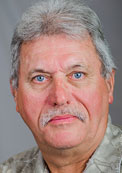 Legislation has been at a standstill, possibly because of the elections. At the October BOD meeting, we discussed strategies to get our legislation moving, as we hope to get it passed in this 114th Congress. Town hall meetings continue across the country. We need people who have attended to call their members of Congress and ask them to co-sponsor all Agent Orange-related legislation. If your legislators have signed on, be sure to thank them.
Legislation has been at a standstill, possibly because of the elections. At the October BOD meeting, we discussed strategies to get our legislation moving, as we hope to get it passed in this 114th Congress. Town hall meetings continue across the country. We need people who have attended to call their members of Congress and ask them to co-sponsor all Agent Orange-related legislation. If your legislators have signed on, be sure to thank them.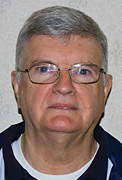 The Economic Opportunities Committee continues to carry out its mission in two key areas:
The Economic Opportunities Committee continues to carry out its mission in two key areas: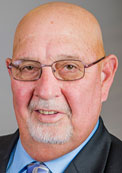 The Membership Affairs Committee’s long-term goal for the 2015-17 term was 78,000 members.
The Membership Affairs Committee’s long-term goal for the 2015-17 term was 78,000 members.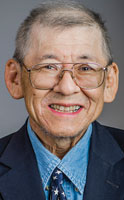 The Minority Affairs Committee is preparing its budget request for FY2018. If you would like a committee member to attend an event you are hosting to honor a minority veteran community, please notify the committee.
The Minority Affairs Committee is preparing its budget request for FY2018. If you would like a committee member to attend an event you are hosting to honor a minority veteran community, please notify the committee.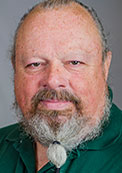 There remain 1,618 missing from the Vietnam War, unchanged since June 9, 2016.
There remain 1,618 missing from the Vietnam War, unchanged since June 9, 2016.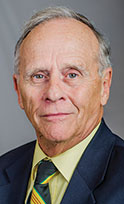 As confusing as the politics were during the Vietnam War, so is the confusion of timelines and dates of the beginning and ending of our war. Gather a group of Vietnam veterans—in-country or not—and you will find a difference of opinion about dates defining our war. The 50th Anniversary Commemoration Commission defines a Vietnam veteran as someone who served in the U.S. military between November 1, 1955, and May 15, 1975. Its intent is to leave no one out of receiving recognition during the war and to make sure every veteran during that time receives the Commission’s Vietnam Veteran Pin.
As confusing as the politics were during the Vietnam War, so is the confusion of timelines and dates of the beginning and ending of our war. Gather a group of Vietnam veterans—in-country or not—and you will find a difference of opinion about dates defining our war. The 50th Anniversary Commemoration Commission defines a Vietnam veteran as someone who served in the U.S. military between November 1, 1955, and May 15, 1975. Its intent is to leave no one out of receiving recognition during the war and to make sure every veteran during that time receives the Commission’s Vietnam Veteran Pin. 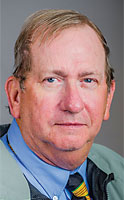 Since 2001 Veterans Against Drugs has had a working partnership with the Community Anti-Drug Coalitions of America (CADCA). This relationship has helped us showcase the VAD program and receive important and timely information on drug abuse issues on the local, state, and national levels.
Since 2001 Veterans Against Drugs has had a working partnership with the Community Anti-Drug Coalitions of America (CADCA). This relationship has helped us showcase the VAD program and receive important and timely information on drug abuse issues on the local, state, and national levels.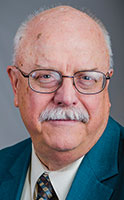 Jonathan Davis has been promoted to Deputy Director of the Veterans Benefits Department. Davis had served as VSO counsel. Before attending law school, he served in the U.S. Army. He led a Military Police team on more than forty combat missions and participated in some four hundred combat missions while deployed in Iraq. Davis will be an excellent asset to help lead Veteran Benefits.
Jonathan Davis has been promoted to Deputy Director of the Veterans Benefits Department. Davis had served as VSO counsel. Before attending law school, he served in the U.S. Army. He led a Military Police team on more than forty combat missions and participated in some four hundred combat missions while deployed in Iraq. Davis will be an excellent asset to help lead Veteran Benefits.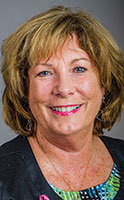 VVA supports S.2921, The Veterans First Act, which includes the Toxic Exposure Research Act of 2015. However, it still needs more cosponsors. As all of us who have had illnesses resulting from toxic exposure during our service time can confirm, this research needs to be done.
VVA supports S.2921, The Veterans First Act, which includes the Toxic Exposure Research Act of 2015. However, it still needs more cosponsors. As all of us who have had illnesses resulting from toxic exposure during our service time can confirm, this research needs to be done.